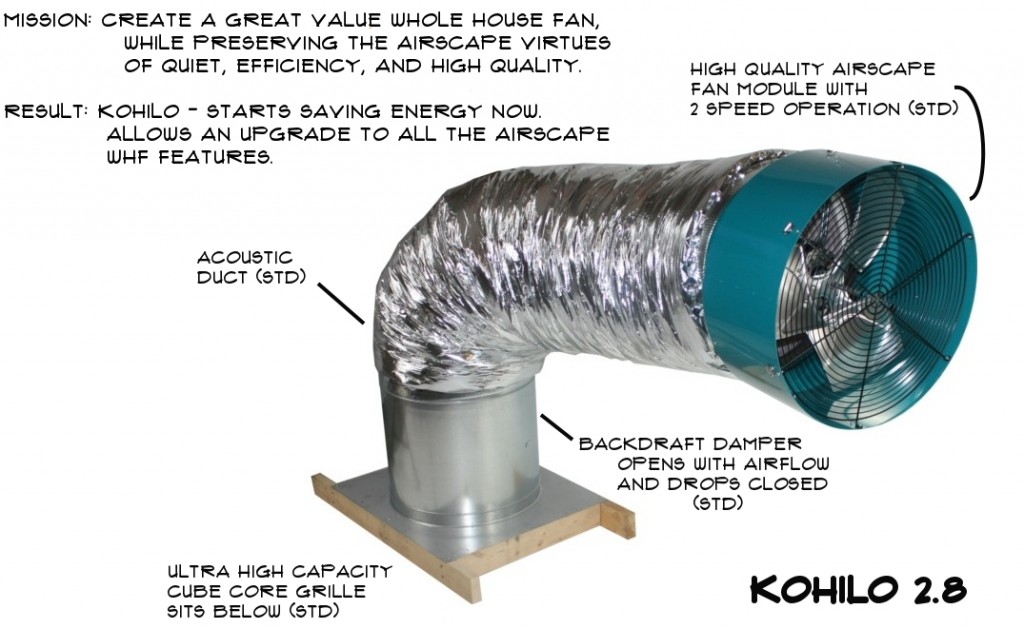The Kohilo Whole House Fan is designed to be more financially available (yes, that is a genteel word for cheaper) than our flagship units. How did we do this ? We replaced the motorized damper unit and electronics board with a backdraft damper.
A backdraft damper is pushed open with airflow and falls back (by gravity) when the fan is off. This provides a basic seal (nothing like our motorized dampers), but has no insulation. In severe climates the Kohilo grille will have to be manually insulated at the end of the season. We do provide an upgrade path for customers so that they can upgrade to the full AirScape functionality and convenience.


